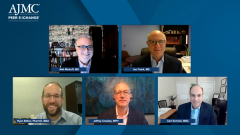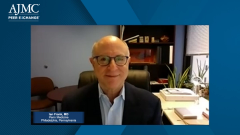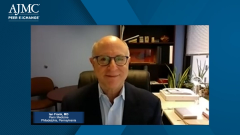
Abandoned PrEP: Targeting Nonadherent Patients
Key opinion leaders in HIV discuss nonadherence to HIV PrEP and methods to address patient “walk away.”
Episodes in this series

Neil Minkoff, MD: We hear about patients who walk away from therapy. Patients who’ve started and then they have stopped for any number of reasons, beyond pill burden, or maybe even beyond cost or cost-share. What in your experience are the reasons patients may start but then stop therapy or even become aware of it and delay therapy? How do you address those concerns?
Jeffrey Crowley, MPH: Again, I’m not a provider. But I’ve done some work trying to understand this with young Black and Latinx gay men. We’ve done it by convening people aged in their early 20s, people on PrEP [pre-exposure prophylaxis], trying to understand why they don’t adhere. I’m in my 50s, and I’m openly gay. I’ve dealt with being gay for decades now. One of the things we came away with is that a lot of these young guys are still dealing with the homophobia in their families and in their social environments. They haven’t worked through all their issues. They’re really conflicted and as a result, maybe they get prescribed PrEP, but then they still hear the voice of their pastor in their ear about how they’re sinning and everything, and it’s unresolved. I think we need different approaches to help these groups of people sort through their sexual identity. Again, I think that goes back to peers. I think it’s getting these people access to the right providers who normalize sex and talk about how to reduce the risk, where PrEP is one tool. However, I think that’s a very different conversation than with someone who’s older and may have sex less frequently. Thus, they may not see the benefits of daily pill-taking.
Neil Minkoff, MD: Let me ask Ryan. From the payer point of view, we do a lot of work on the payer’s side to try to improve patient persistence, but also try to prevent patients from abandoning therapies in all sorts of different disease states. Are there any programs you think are more specific around PrEP therapy to try to hit those public health goals of reducing future infections and so on?
Ryan Bitton, PharmD, MBA: Yes, there’s a whole host of things that could be done. I think part of the problem is limited amount of data. We wish we had all the data and databases of the insurer that could be used, that we could be identifying all the aspects of the population. However, what we’ve got is pharmacy claims to look at. We obviously have refill campaigns and reminders, and things of that nature. But identifying people who in an algorithm, as I was talking about earlier, for example meet the criteria for the statement, “If you haven’t filled [a prescription] in 15 days and you’re supposed to be filling it daily,” then that’s the point where we engage. I think there’s a study that looked at walk-away rates, and it was almost 60,000 patients. For those who are slightly delayed or mildly delayed and refilling, they had greater rates than those who were taking it daily. However, for those who just walked away, had a prescription and you never received it, there’s almost 3 times as much HIV transmission in that group. I think that we can use pharmacy data to help find these things. Then it’s like, now we have the story, but what do we do with it? There are different ways to do that. I’m not sure that we’ve figured out a specific model for PrEP, and subsequently, if you’ve got delayed refills in PrEP, this is what you need to do. I don’t have a program at my regional health plan. We haven’t undertaken that. We haven’t started a program around that.
Carl Schmid, MBA: I know we’re focused a lot on payers in this conversation. But for people living with HIV, we have the Ryan White HIV/AIDS Program, which provides…they can be insured, they can be underinsured, and they can be Medicaid, Medicare. They provide those support services and counseling services to make sure people adhere to their medications, because for treatment it’s extremely important to adhere to their medications. Perhaps we need something, this is where the CDC [Centers for Disease Control and Prevention] can help, and the community health centers have a program for PrEP as well. However, it needs to be the providers as well and not just the payers. Because again, HIV is a public health issue. Thus, everyone needs to be working together.
Transcript edited for clarity.
Newsletter
Stay ahead of policy, cost, and value—subscribe to AJMC for expert insights at the intersection of clinical care and health economics.









































